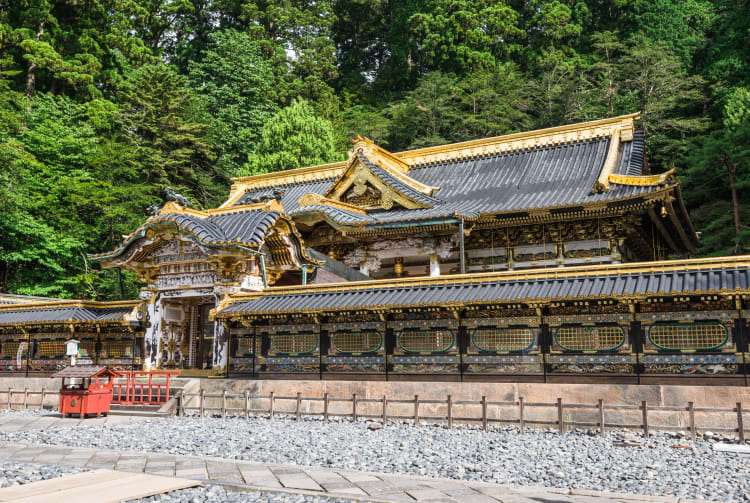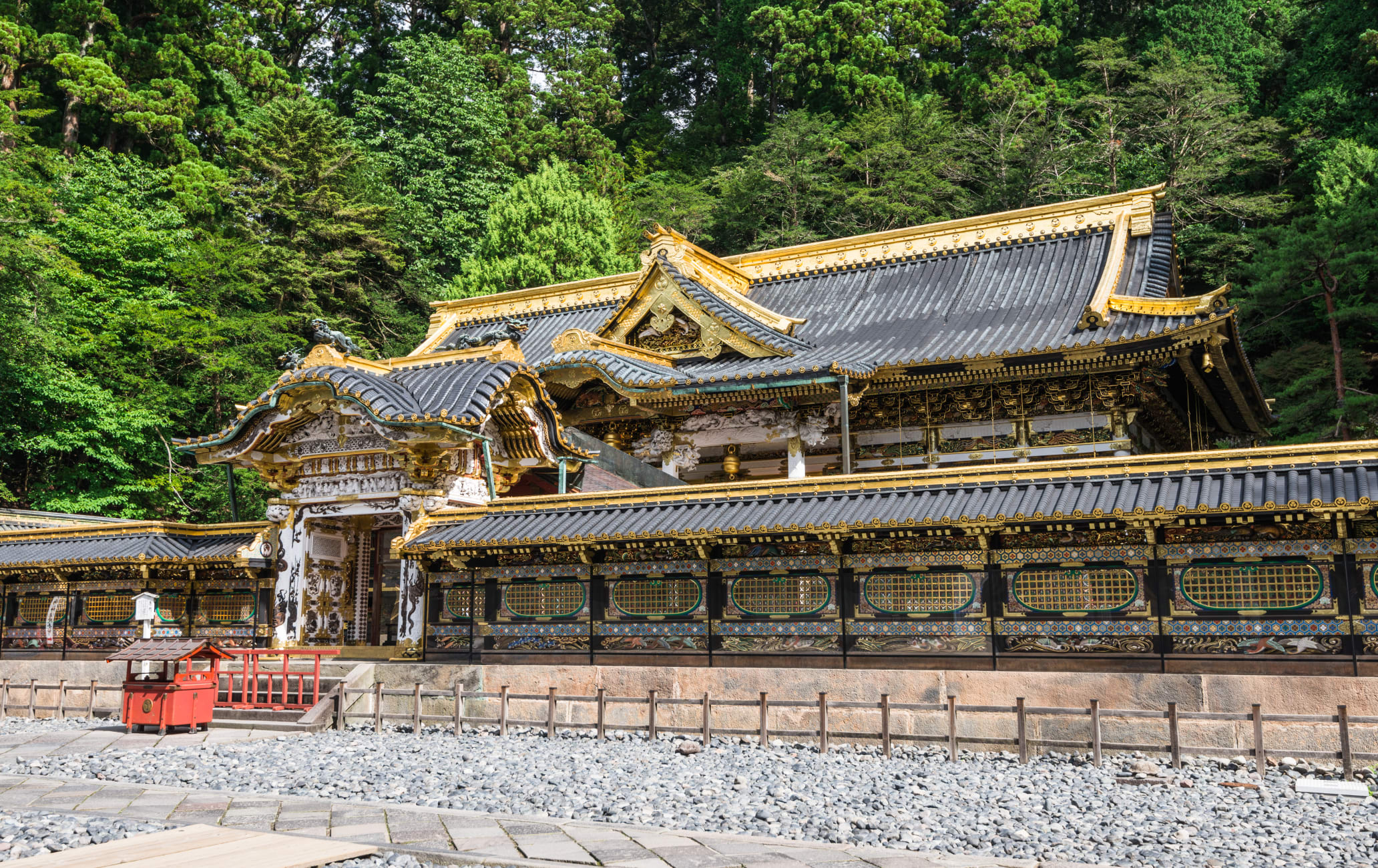A magnificent shrine, dedicated to a famed warlord
Nikko Toshogu Shrine enshrines the most famous samurai leader Tokugawa Ieyasu. Its carved and brilliantly decorated structures are part of the Shrines and Temples of Nikko UNESCO World Heritage site and the highlight of any visit to Tochigi.
Don't Miss
- The shrine's towering and colorful five-story pagoda
- The original carving that inspired the “see no evil, speak no evil, hear no evil” maxim

How to Get There
Nikko is well serviced by public transportation, and getting to its World Heritage sites is easy.
From Nikko Station or Tobu Nikko Station, the World Heritage tour bus makes stops at Nikko's UNESCO sites, including Nikko Toshogu Shrine. The ride takes about 15 minutes.
If time allows, the walk from Nikko Station takes about 45 minutes and provides the opportunity to enter the World Heritage site from Shinkyo Bridge, sacred Nikko's traditional gateway.
The gods of Nikko
Tokugawa Ieyasu played a pivotal role in unifying Japan and is one of the most important figures in the nation's history. His rise to the status of shogun initiated the Edo period (1603-1867), which was the most peaceful and prosperous period in the long history of ancient Japan and propelled the merchant city of Edo towards its destiny as the world-renowned megalopolis of Tokyo .
A year after his death, Tokugawa Ieyasu was enshrined at Nikko, elevating his status to divinity. Toshogu branch shrines spread throughout Japan.
Every year, Nikko Toshogu Shrine holds the Shuki Taisai Grand Festival in the fall and spring with a procession of a thousand warriors, re-enacting the arrival of Tokugawa Ieyasu's remains in Nikko .
Design fit for divinity
When Nikko Toshogu was constructed, the designers had something divine in mind. The ingenuity and careful attention to detail that went into constructing Nikko Toshogu Shrine is extraordinary. Its vibrant colors and flamboyant carvings stand in stark contrast to much of Japan's more spartan design.
Among the breathtaking structures at Nikko Toshogu, the five-storied pagoda is the most conspicuous because of its height. It stands near the main entrance. The five stories represent the elements of existence in ascending order: earth, water, fire, wind, and void.

The Yomeimon Gate is Japan's most lavishly decorated gate. It is covered with 508 detailed carvings of children and elders and mythical beasts and is a masterpiece of Edo-period craftsmanship.

Yomeimon Gate
The okumiya or inner shrine of Tokugawa Ieyasu is the most significant site. You'll ascend a long set of stairs through thick forest to reach it. The view from above of the main hall and the Yomeimon Gate is worth the climb.

Tokugawa Ieyasu's tomb
Superb carvings
You could spend hours taking in the all the intricate carvings that cover Nikko Toshogu Shrine, but three are particularly renowned.
The Nemuri-neko, or sleeping cat, was carved with two flying sparrows on its backside. The animals' co-existence was said to symbolize a peaceful future for the newly unified Japan.
One of the more bizarre, yet memorable carvings at Nikko Toshogu Shrine is the "Imagined Elephant," or Sozo-no-zo. It was carved by an artist who had never seen one, and the elephant's mythic proportions show through.


The sleeping cat and the Sozo No Zo
The shrine's most famous carving by far is the Three Wise Monkeys. The first "sees no evil," another "speaks no evil," and the last "hears no evil."
The carving is one of a series of eight on the Sacred Horse's stable, that uses monkeys to portray the phases of human existence, with wisdom for each stage. The three monkeys teach children how to avoid bad things in life by seeing, speaking, and hearing no evil.

The three wise monkeys
More in Nikko
After taking in this magnificent shrine at your leisure, Futarasan-jinja Shrine and Rinnoji Temple , Nikko's other World Heritage sites, are both within walking distance. A short stroll over to Taiyuinbyo, an elaborate shrine that also serves as the mausoleum of Tokugawa Ieyasu's grandson Iemitsu, who built Nikko Toshogu, is also well worth a visit.




























































